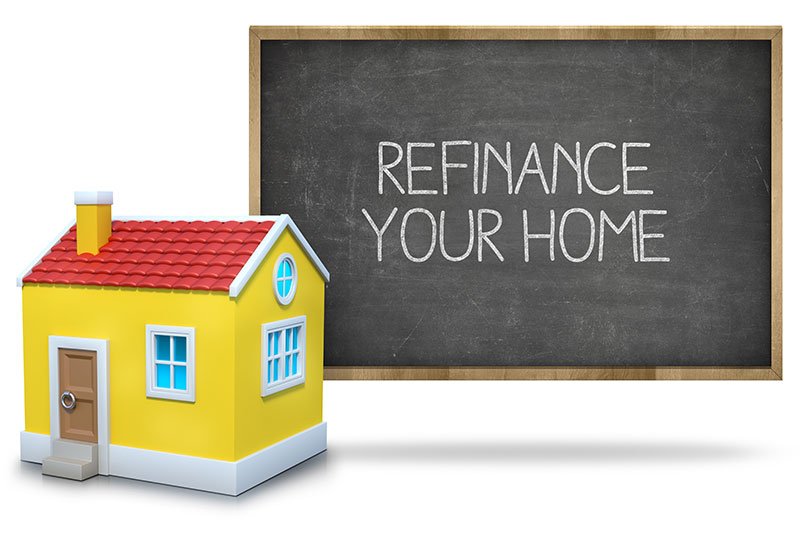How to Refinance Your Home Loan
If you have equity in your home, you can use it to refinance your home loan. That money will be added to the principle of the new loan. This option is a much more affordable way to obtain a loan than lines of credit or personal loans. However, you must have a large enough equity in your home to qualify for the loan.
Cash-out refinance
A cash-out refinance home loan is a type of loan that replaces an existing mortgage by allowing you to get cash back on some of the equity in your home. This can be very beneficial if you want to make home improvements or pay off your debt. But you should make sure that the money you take out is a good investment.
If you are considering a cash-out refinance, you should first determine your need for the funds. You may need the money for a specific purpose, so you should gather all your debt information and determine what your financial situation will look like if you take the loan. For instance, if you’re aiming to remodel or repair your home, you can take advantage of this money by hiring a contractor to do the work for you.
Another option for cash-out refinancing is to take out a home equity line of credit. This type of loan will give you an additional line of credit, but the interest rate will be higher. You can use this money to make home improvements or pay off contracts. It’s a great option for those looking to access some of their equity, but remember that cash-out refinancing does have its disadvantages. If you’re looking for a relatively small sum, like under $10,000, a HELOC may be the best option.
The amount of money you can borrow depends on your current home value. Typically, you can borrow up to 80 percent of your home’s value. However, this threshold can vary depending on your credit score, type of mortgage, and property. If you have more equity than that, you may qualify for an FHA cash-out refinance loan, which allows you to borrow up to 85 percent of your home’s value. You can also get a cash-out home loan guaranteed by the Department of Veterans Affairs, which allows you to get up to 100 percent of your home’s value.
30-year fixed-rate refinance
A 30-year fixed-rate refinance home mortgage can lower your monthly payments and allow you to spread out repayment over a longer period of time. However, refinancing is not without risks. You need to make sure that the benefits outweigh the upfront costs of the refinance, which are typically 3% to 6% of the loan balance.
First, you will need to check your current mortgage rates. Interest rates vary from lender to lender, and shopping around can save you thousands of dollars over the life of your loan. According to Freddie Mac, one additional rate quote can save you about $1,500. However, if you get five rate quotes, you can save as much as three to five times that amount.
Lenders use different criteria to determine whether you qualify for a 30-year fixed-rate refinance. These factors include your income, credit score, and debt to value ratio. Those with a good credit score can get the best deals. The 30-year fixed-rate refinance home loan is the most popular type of refinance.
The mortgage rates of 30-year fixed-rate refinance home loans fluctuate frequently. This creates new opportunities for homebuyers. When mortgage rates are low, the demand for these loans skyrockets. With a low-rate mortgage, you won’t have to worry about inflation, which will make the 30-year fixed-rate refinance home loan even more advantageous.
Non-credit-qualifying refinance
If you have bad credit and need to refinance your home loan, you can get a non-credit-qualifying refinance. There are a few benefits to this type of refinance, including lower interest rates and no credit check. You can use this type of refinance if you have a low credit score but have excellent income.
There are two types of streamline refinance loans available through the FHA: credit-qualifying and non-credit-qualifying refinance. Credit-qualifying streamlines require that your credit score and income be verified. Non-credit-qualifying streamlines are faster and easier to get approved, and they can reduce your monthly payments.
In addition to applying for a non-credit-qualifying refinance home-loan, homeowners who have already assumed a mortgage can also get a streamline refinance. To qualify, you must have made mortgage payments on time for at least six months.
FHA streamline refinances also have fewer requirements. For example, FHA streamline refinancing requires no credit verification or job verification. This type of refinance allows you to refinance your existing adjustable-rate mortgage into a fixed-rate mortgage. But, you must make sure that the new loan will not increase your payment by more than 20%.
Streamline refinances are also beneficial for homeowners who already have a FHA loan. They can help you save thousands of dollars in interest over the life of the loan. However, you must be sure to find a lender that is approved by the FHA.

